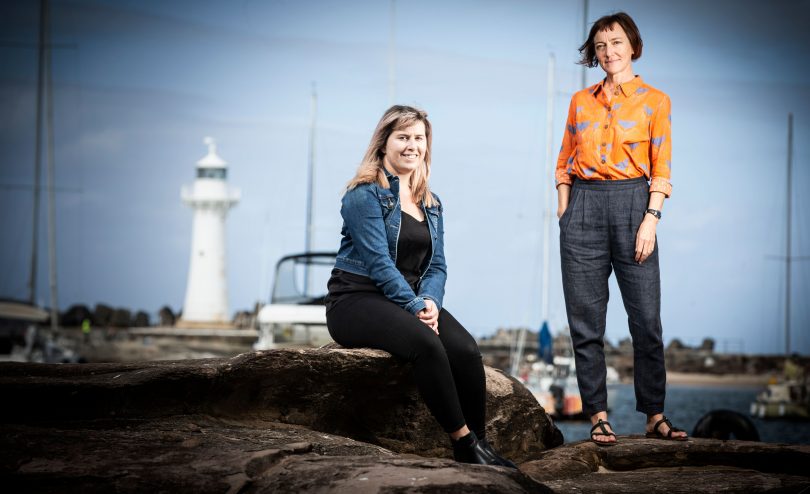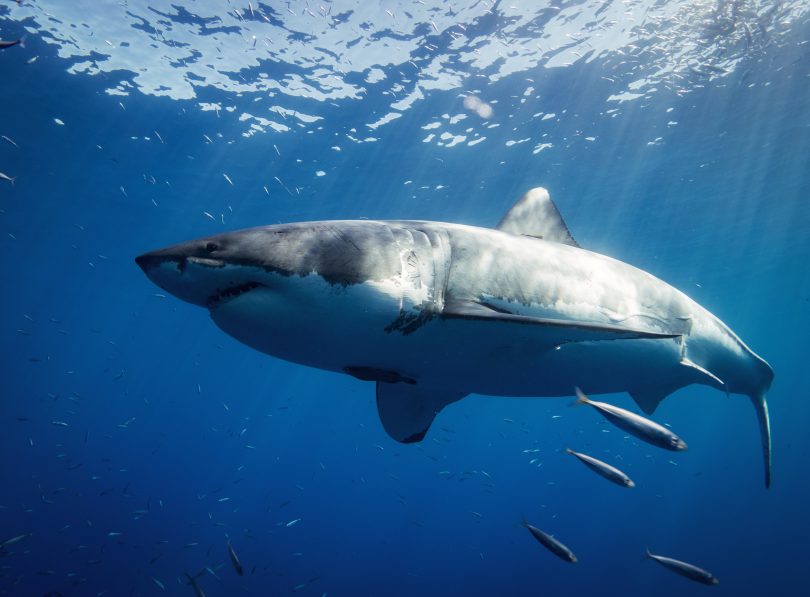
Wollongong University’s Teaniel Mifsud (left) and Dr Leah Gibbs (right) want to hear about your shark encounters. Photo: Supplied.
Getting up close and personal with a shark may be the stuff of nightmares for most of us, but university researchers are hoping NSW South Coast residents will share details of their encounters in a bid to better understand the full gamut of human-shark relations.
While sharks are a magnet for public interest and media coverage, that’s usually dominated by encounters that involve shark bites – even though they are comparatively rare.
However, University of Wollongong (UOW) researchers are investigating the full spectrum of human interactions with sharks – positive, negative or mixed – and are calling on people to contribute their stories to a crowdsourced map of shark encounters on the NSW South Coast.
Teaniel Mifsud, a Masters student from UOW’s School of Geography and Sustainable Communities, said people are intensely fascinated with sharks.
“Sharks attract a great deal of interest from the public and the media,” she said.
“We saw this recently when a whale carcass washed up on Bulli Beach in September 2020. Several sharks were drawn to the carcass over a number of days seeking food.
“Their presence, along with the whale carcass, brought hundreds of people to the beach and into boats to watch, photograph and video the scene.
“Despite this clear interest, very little is known about encounters between people and sharks outside interactions considered negative – that is, shark bites that lead to injury or death.”
The research team from the Australian Centre for Culture, Environment, Society and Space (ACCESS) – including Ms Mifsud’s Masters supervisors, Dr Leah Gibbs and Dr Chris Brennan-Horley – are inviting people to contribute to the interactive map, pinpointing the site of their encounter and answering a few questions about it. Their data will then be added to the map.

Sharks hold a particular fascination with the public. Photo: Gerald Schombs.
Dr Gibbs said the purpose of the research is to explore human-shark encounters and their effects on ocean users.
“While there is an existing body of research concerning perceptions of sharks in general, little is known about the perspectives of people who have had actual encounters with sharks,” she said.
“Understanding the perspectives of this group will add to our understanding of human-shark relations and help inform shark-related policies in NSW.”
Ms Mifsud said she has long had an interest in the ocean and marine life, but it was her time as a surf lifesaver that sparked an interest in shark encounters.
“The idea of encountering sharks was always there, either in the training or from talking to older members,” she said. “I became interested in how these encounters effected how people continued to go back into the ocean.”
The map has already generated responses from people who have encountered sharks while swimming, surfing, diving or fishing.
“The majority of respondents have had positive reactions to encountering sharks,” said Ms Mifsud. “Many have described the encounters as exciting and how they felt lucky to have the opportunity to witness sharks in their natural environment.
“The most surprising part for me is that the majority of people haven’t gotten out of the water after encountering a shark. The reaction of many surfers and swimmers is to stay in the water. This is very different from what we are usually told to do, and is something I look forward to exploring more in later interviews.
“I’ve had a couple of shark encounters myself, but nothing as exciting as those we’ve already collected on the map. Those experiences were both exciting and a little alarming, and good reminders that sharks are always in the ocean, even when we don’t see them, and that we are just visitors in that environment.
“I hope this project is able to show the community how regularly shark encounters occur and they are not those Jaws-like encounters highlighted by media and pop culture.
“Hopefully it will assist with changing perceptions and attitudes towards sharks.”







